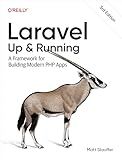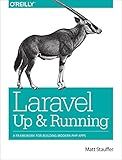Best Laravel Query Techniques to Buy in December 2025
To use percentage in a Laravel query, you can use the % symbol as a wildcard with the like operator. For example, to search for records in a database where a certain column contains a specific string pattern along with any characters before or after it, you can use the following syntax:
$percentage = '%example%';
$records = Model::where('column_name', 'like', $percentage)->get();
This query will return all records where the column column_name contains the string "example" anywhere within it. You can also use the percentage symbol at the beginning or end of the string to specify different search patterns.
How to calculate percentage change in values using Laravel query?
In Laravel, you can calculate the percentage change in values using the following query:
// Current value $currentValue = Model::where('condition', $value)->sum('column_name');
// Previous value $previousValue = Model::where('condition', $previous_value)->sum('column_name');
// Calculate percentage change $percentageChange = (($currentValue - $previousValue) / $previousValue) * 100;
In this query, replace Model with the name of your model, condition with the condition to filter the data, column_name with the name of the column you want to calculate the percentage change for, and previous_value with the previous value that you are comparing against.
The $percentageChange variable will contain the percentage change between the current and previous values.
How to calculate percentages in a Laravel query?
To calculate percentages in a Laravel query, you can use the DB facade to write a custom query with the selectRaw method. Here's an example of how you can calculate percentages in a Laravel query:
$users = DB::table('users') ->select('name', 'total_score', DB::raw('(total_score / (SELECT SUM(total_score) FROM users) * 100) AS percentage')) ->get();
In this example, we are calculating the percentage of total_score for each user in the users table. We are using the selectRaw method to write a custom SQL query that calculates the percentage by dividing the total_score by the sum of all total_score values in the users table and multiplying by 100.
You can then loop through the $users variable in your view to display the name, total score, and percentage for each user.
Remember to replace the table name, column names, and query logic with your own specific requirements.
What is the result of dividing by a percentage in a Laravel query?
When dividing by a percentage in a Laravel query, you can use the DB::raw() method to perform the division calculation. Here's an example of how you can divide a column value by a percentage in a Laravel query:
$items = DB::table('items') ->select('id', 'name', DB::raw('price / 0.1 AS divided_by_percentage')) ->get();
In this example, we are dividing the price column value by 0.1 (equivalent to 10%) and aliasing the result as divided_by_percentage.
Make sure to replace the 'items' table name, 'price' column name, and 0.1 percentage value with your specific table and column names and percentage value.
How to pass a percentage as a parameter in a Laravel query?
In Laravel, you can pass a percentage as a parameter in a query by simply multiplying the parameter value by 0.01 to convert it to a decimal. Here is an example of how you can pass a percentage as a parameter in a Laravel query:
// Assuming you have a percentage value in a variable $percentage = 50; // 50%
// Convert the percentage to a decimal $decimal = $percentage * 0.01;
// Use the decimal value in your query $results = Model::where('column_name', '>', $decimal)->get();
In this example, we first define a percentage value (50%) in a variable. We then convert this percentage value to a decimal by multiplying it by 0.01. Finally, we use this decimal value in a query to fetch records where a specific column value is greater than the converted percentage value.
By following this approach, you can effectively pass a percentage as a parameter in a Laravel query.




